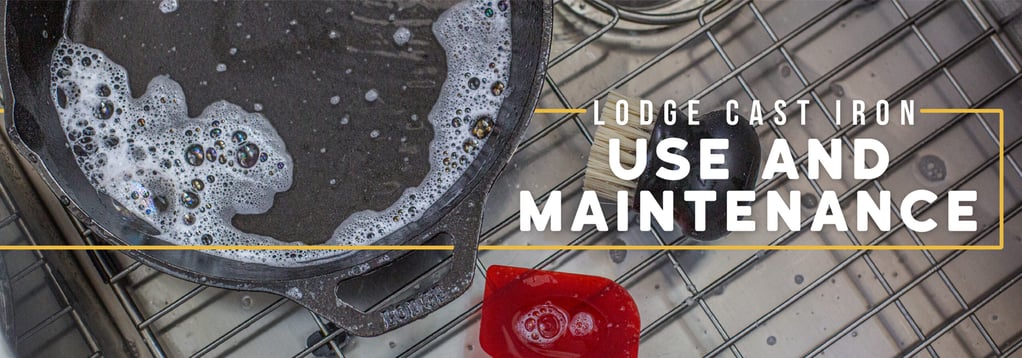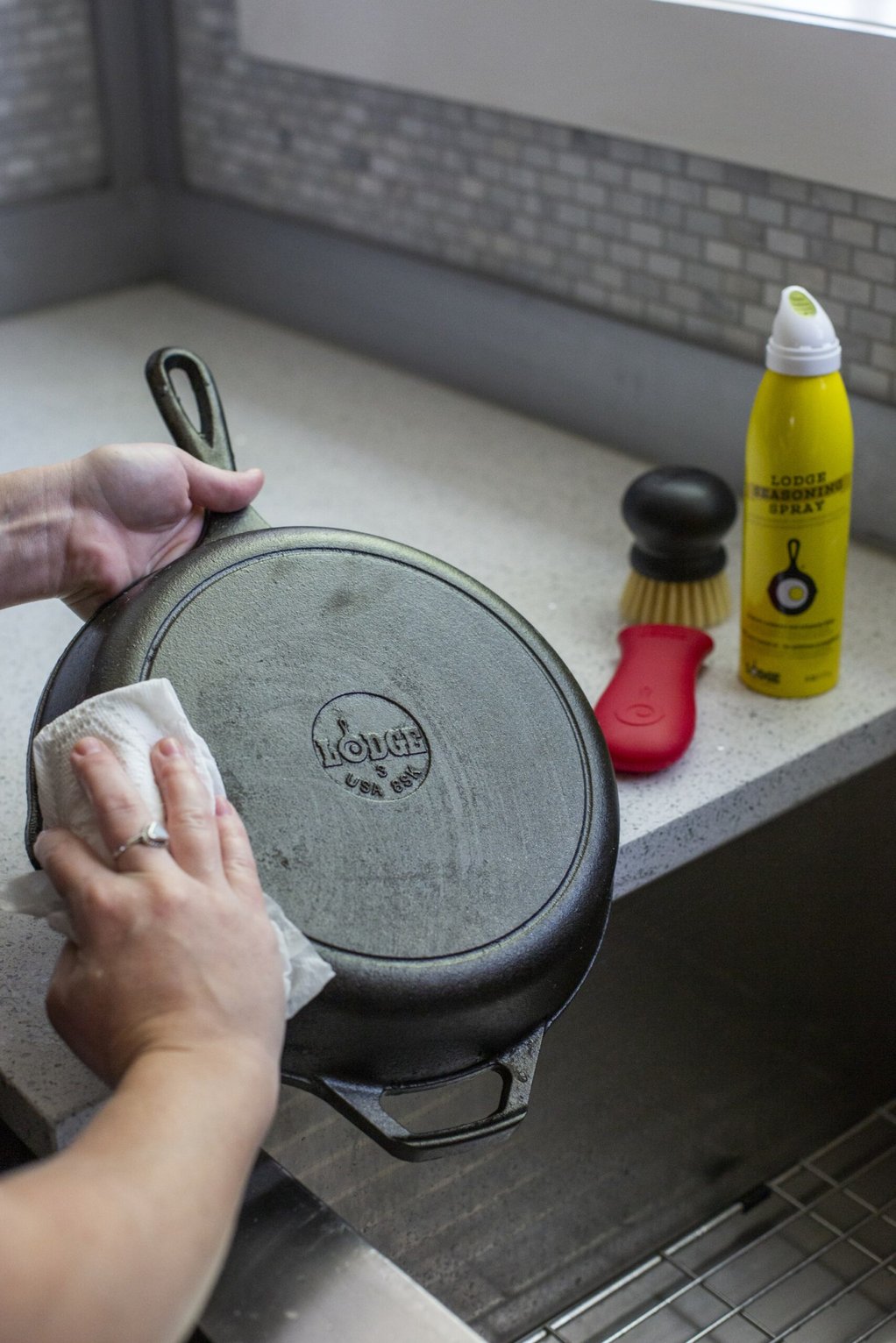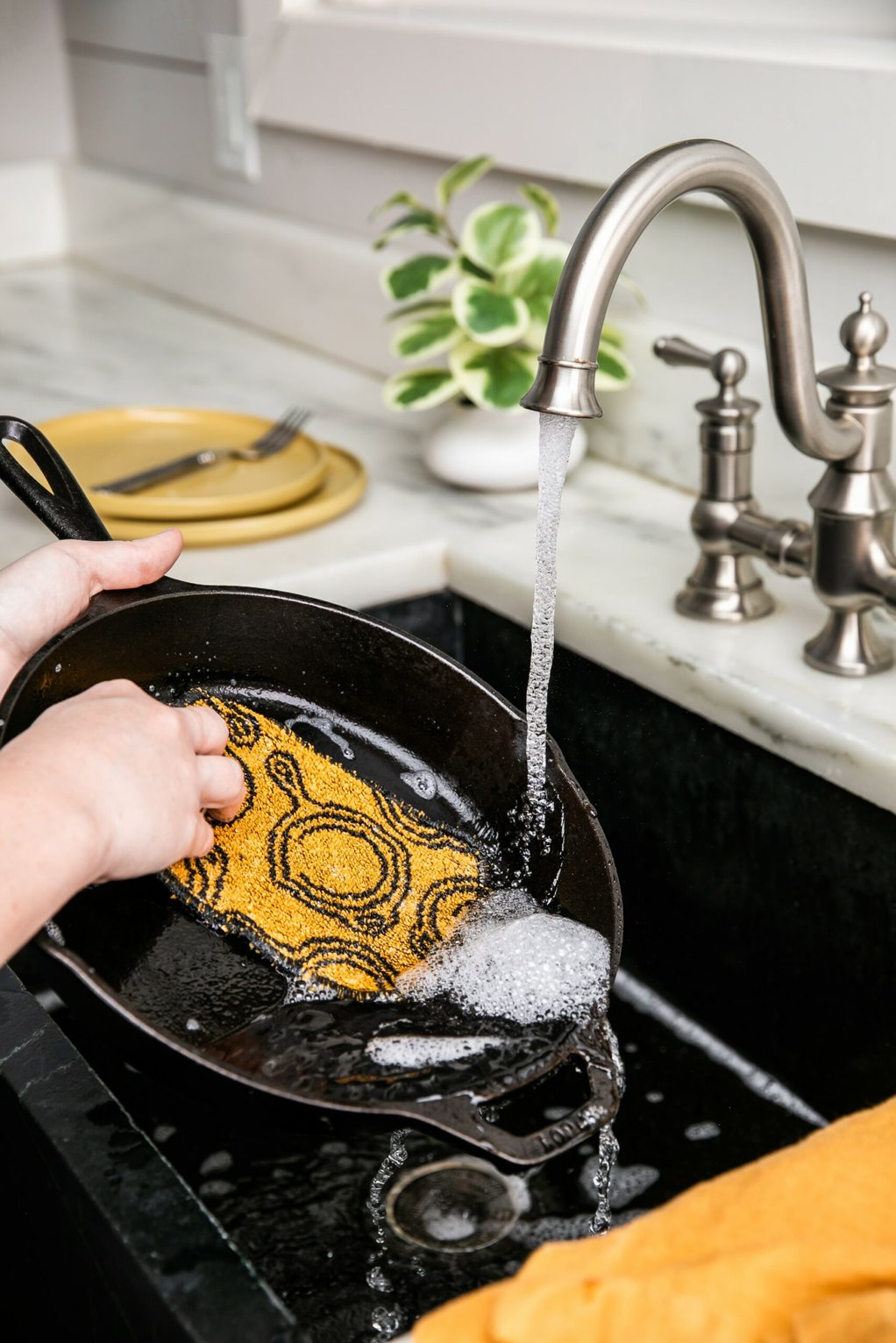
Maintaining Your Lodge Cast Iron Cookware
While Lodge cast iron pans are renowned for their durability, even these incredibly tough pieces have their limits. However, by learning how to care for cast iron, you can keep your collection in optimal condition. Lodge cast iron cookware, when cared for properly, can last generations and be some of the most versatile pieces in your kitchen. Here are some care and maintenance tips to ensure your Lodge cookware's durability and long life.
Preparing Your Lodge Cast Iron for Use
Seasoning is a layer of oil baked onto the cast iron that gives the cookware nonstick properties. This effect is achieved by applying a thin layer of oil all over your cast iron and heating it beyond its smoking point, either on the stove or in the oven. The heat causes the oil to polymerize, bonding it to the cast iron, and creates a finish that allows food to release from the pan surface more easily. This layer also serves to protect the pan from moisture, as iron rusts quickly if not tended to on a regular basis. Lodge pre-seasons its pans so they are ready for use immediately; initial seasoning is not required in the same way as it was in past years.
Though Lodge cast iron skillets are ready to use right out of the box, some cooks opt to add their own initial layer of seasoning in addition to the factory seasoning it comes with. While most of this seasoning comes naturally as you cook with the pan, you can add layers of seasoning before first use to speed up the process.
Cast Iron Seasoning Tips:
- Apply a thin layer of cooking oil to the inside and outside of the pan. All cooking fats and oils can be used for seasoning, but Lodge recommends options with a high smoke point like vegetable oil, melted shortening, or canola oil.1
- If seasoning flakes off or the pan becomes rusted, heat the oiled pan upside down in the oven at 450 to 500 degrees Fahrenheit for 1 hour with aluminum foil or a pan on the rack below to catch drips. Repeat this process three to four times if needed.
- As you cook, the fat, oil, and butter used in the cooking process will add to your layers of seasoning, enhancing the nonstick qualities the more it's used.
- You'll want to avoid heavily acidic foods, like anything tomato or citrus based, until you've built up a good layer of seasoning. These acidic ingredients can not only remove the seasoning, but can also react with the iron and impart a metallic flavor to the food.2
- Use it often, especially for frying, searing, and baking. Regular use improves the seasoning, making it better with time.3
Read KaTom's article on seasoning Lodge cast iron for a more in-depth guide on how to season your cast iron cookware.

Cast Iron Cooking Tips from Lodge:
- Heat the pan slowly by allowing it to preheat along with the oven or by starting the burner on low before turning up to your desired heat.
- Do not bring the pan to high heat while empty.
- Use a burner as close to the size of the pan as possible to encourage even heat distribution. 4
How to Clean Lodge Cast Iron
Cleaning any Lodge cast iron product is a simple process consisting of three steps: washing, drying, and oiling. No matter what you've cooked in it, your cast iron pan should stay in great shape (and even improve with time) if you follow these steps.
- Wash the pan with warm water, using a small amount of dish soap if necessary; the oft-repeated belief that dish soap ruins seasoning is a myth. When necessary, scrub with a nonmetal scouring pad or scrub brush. Lodge also offers plastic pan scrapers that can help remove cooked-on food without damaging the seasoning. Lodge cast iron products should not be put in the dishwasher, as this can ruin the seasoning, promote warping, or cause the pan to rust.
- The most important part of cleaning any cast iron cookware is to thoroughly dry the pan immediately after cleaning to prevent rust. After drying the pan with a towel, you can warm it in the oven or on a burner to remove any residual moisture.
- Finally, wipe the pan with a thin layer of oil to get it ready for the next use.
Cast Iron Cleaning Tips:
- Don't place a hot pan in cold water, as sudden, drastic temperature changes can cause cracks or warping.
- Do not soak a cast iron pan in water to remove stuck-on food, as this promotes rusting.
- While heat-treated cast iron can be cleaned in the dishwasher, this may remove any additional seasoning you have built up.
- Remove any stuck-on food with a nonmetal scouring pad, scrub brush, or plastic scraper.
- For stubborn, cooked-on food, scrub the pan with coarse or kosher salt.
- Avoid abrasive cleaners and scouring powders, as these will ruin the seasoning.
- While many cast iron purists refuse to use it, small amounts of mild dishwashing soap will not damage a good layer of seasoning.
- Fully dry the pan after cleaning with a towel and use low heat from an oven or burner to remove any remaining moisture.
- Wipe pan all over with a thin layer of oil when dry.

Lodge Cast Iron Maintenance and Storage
The best advice for maintaining a Lodge cast iron skillet: use it! Regular cooking, followed by proper cleaning and seasoning, ensures your cast iron cookware will last as long as you need it. It's common to find the Lodge stamp on well-seasoned and cared-for cast iron skillets at yard sales and flea markets that have withstood generations of use. The biggest threat to any cast iron piece is rust; if your cast iron skillet has developed rust spots, simply scrape off the rust with a scouring pad, soap, or one of Lodge's Rust Erasers; wash the pan in warm water to ensure any residual rust is removed; and repeat the steps for seasoning in the oven until it is restored to its former glory.
Clean, seasoned cast iron can be stored anywhere dry. Pans that can nest can be stored that way with paper towels between them, but lids should be stored separately to allow air circulation. Many who collect cast iron pieces like to display them, and while most display methods allow ample air circulation, keep the weight in mind when planning how you will accomplish this. Wall hooks, a pot rack, or a baker's rack are all options to consider, but keep each shelf or hook's weight limit in mind and spread out your collection or limit how many pieces you display as needed.
References
- Cleaning and Care: Cast Iron Seasoning. Lodge Cast Iron. Accessed July 2023.
- What to Cook in Cast Iron. bon appétit. Accessed July 2023.
- The Truth About Cast Iron Pans: 7 Myths That Need To Go Away. Serious Eats. Accessed July 2023.
- Heavy Metal. Cooking Issues. Accessed July 2023.

